Instead of money, they store precious human, animal or plant samples. In fact, it could be argued that what they contain is far more valuable to the future of humanity than money. Regulated by strict ethical standards, biobanks, or banks of nature’s samples, are indispensable for both scientific progress and the development of new treatments for disease. Biochemist Eva Ortega (Madrid, 1972) is someone who knows a great deal about them. She is the Spanish representative in the European Consortium of Biobanks and directs the biobank of the Spanish National Cancer Research Centre (CNIO).
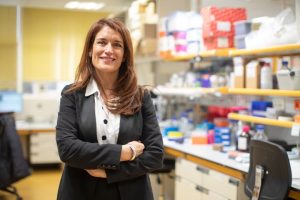
These banks would not exist without donations from patients, Ortega says: “If there is one thing that inspires me every morning, it is the patients. They are the heroes with their donations and they are an essential part of research. They are undoubtedly the main focus of my daily work, because at the end of the day, we will eventually all be patients or have someone close to us who is hoping for a cure. There is a lot of hope behind every sample,” she says.
“If research is carried out with human samples, biobanks must operate and comply with all the ethical requirements established by law to protect the integrity of donors”
Biobanks collect, process and store samples or specimens of humans, animals, plants, microorganisms, etc., together with the relevant information on each of these samples. Ortega compares them to libraries: “Biobanks are to samples what libraries are to books, so we could define a biobank as a specimen library for research. If research is carried out with human samples, biobanks must operate and comply with all the ethical requirements established by law to protect the integrity of donors,” she says.
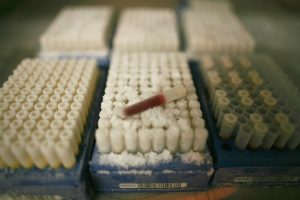
These samples, processed according to high quality standards, are stored in order to serve various research projects, facilitating personalised medicine and thus leading to improvements in health and quality of life for society in general.
“The metastases travel from the donor’s brain to our biobank, after being surgically removed, under special and tightly controlled transport conditions”
Regarding the selection process of these samples (which can be done for a specific study or for the biobank to have them), Ortega explains that the first essential requirement is the consent of the donor of the sample, accompanied by an information sheet with all the data about the study, its objectives, the treatment of the data, etc. “It is also important to emphasise,” the researcher says, “that research projects can only be carried out if they have been approved by a research ethics committee, which, together with a scientific committee external to the biobank, also approves or rejects the release of human samples associated with these projects.”
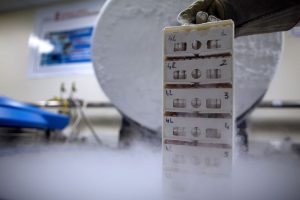
The biobank that Ortega directs has almost 9,000 cases (each corresponding to one donor) that have deposited samples of lymphoma, gynaecological and digestive cancers, breast cancer, brain metastases, COVID, etc. It also has a cohort of healthy donor samples and primary skin cultures. This results in a pool of almost 43,000 samples of various types (solid tumours, blood, faeces, nails, saliva, urine, etc.).
One example is the RENACER (National Network of Brain Metastases) cohort. “One of its peculiarities is that it creates a biobank of live samples,” explains Ortega. “The metastases travel from the donor’s brain to our biobank, after being surgically removed, under special and tightly controlled transport conditions, in order to analyse the ability of certain compounds to fight these cancerous cells. Compounds that in the future, hopefully in the very near future, could be used in drugs that cure patients and improve their quality of life.”
“Some of the samples will allow us to study, for example, whether long-haul flights can alter circadian rhythms and thus affect the immune system, making it more susceptible to diseases such as cancer”
Another cohort, the prospective longitudinal cohort of flight attendants, is obtained in collaboration with the Spanish Association of Flight Attendants (AETCP) and, possibly in the near future, will include pilots through the Spanish Airline Pilots Union (SEPLA). “This cohort offers a unique opportunity to study why this group may be at greater risk of suffering certain pathologies. Among them, in collaboration with researcher María Casanova-Acebes, we are studying whether long-haul flights can alter circadian rhythms and thus affect the immune system, making it more susceptible to diseases such as cancer. But in addition to cancer, this unique collection also allows for the study of other diseases,” she explains.
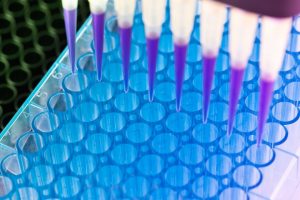
Ortega represents Spain in the European Consortium of Biobanks, which brings together 24 countries, of which 20 are full members and four are observers (which includes Spain), as well as the International Agency for Research on Cancer (IARC). “The networking in our country, which emerged under the coordination of the then scientific director of the CNIO biobank, Manuel Morente, was partly one of the driving forces behind this European consortium (known by the acronym BBMRI-ERIC), which is ten years old this year,” says Ortega.
Despite the obvious importance of these biobanks, their role needs to be made more visible and better promoted. Ortega suggests a number of measures that would help achieve this: “Funding agencies, research ethics committees and scientific journals should require that those projects that work with human samples have a biobank source code as a sign of quality; collections of samples that are outside the reach of biobanks should become part of them; and models that are derived from human samples, such as organoids and xenografts, should also become part of them.”
“When my husband passed away, when the time came to donate samples for research, what I saw in each tube was not a sample, but the hope that the donors put into each one of them”
Eva Ortega is also the type of professional who does not hesitate to lead by example. She recounts a difficult personal experience that attests to her firm belief in the value of biobanks and donations. “At one point in my life, in addition to working in the field of cancer, I experienced cancer in my home life. My husband was diagnosed with oesophageal cancer, from which he died, and which also metastasised to the brain. This episode was a turning point in my life. When it came time to donate samples for research, what I saw in each tube was not a sample, but the hope that the donors put into each one of them. We cannot let them down.”
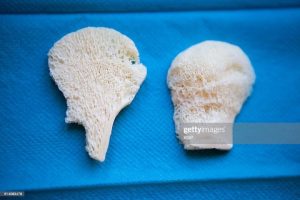
Her dream, which is also her greatest professional challenge, is linked to this experience: “I wake up with the hope that my young son, who witnessed first-hand the epileptic seizures his father suffered as a result of brain metastases, will be the last child burdened with this memory.”
Comments on this publication